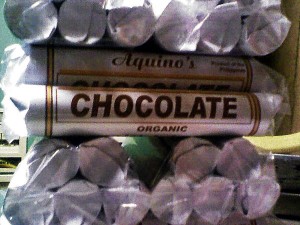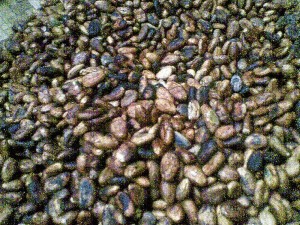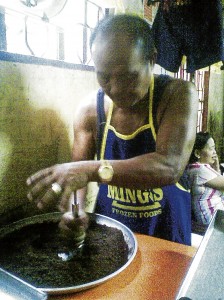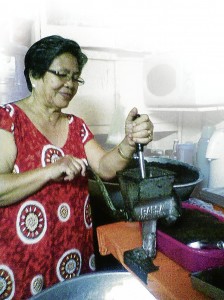By ZAC B. SARIAN
July 22, 2011, 4:29pm

MANILA, Philippines -- With just one spray with a new growth-enhancing formulation, a farmer in Pangasinan was able to produce 13 tons of corn kernels (14% moisture content) in one hectare.
That’s the good news that our friend, Alfonso G. Puyat, brought to us a couple of days ago. Puyat is a dedicated researcher who has long been making studies on how to enhance yields of rice, corn and other crops at affordable costs.
Puyat has been developing his plant growth-enhancing formulations for a number of years now. He only has tentative names for them such as Philor Formula I and Philor Formula II. Patents are still pending but in the meantime, they are being tried by scientific researchers as well as by hands-on farmers.
One of the recent users is Oftociano “Anong” Manalo of Balungao, Pangasinan who is also the president of the North and Central Luzon Federation of Irrigators Associations. Last January 15, he planted Bt corn Dekalb 9132 on 6,300 square meters. Three-and-a-half months later, he harvested 12.3 tons of fresh corn-on-the-cob. That’s equivalent to 19.53 tons per hectare. When shelled and dried to a moisture content of 14 percent, the yield is equivalent to 13 tons per hectare.
Aside from the conventional fertilizer that Manalo applied (5 bags of complete fertilizer 14-14-14 at planting time and sidedressing of 2 bags urea and 1 bag 0-0-60), he just sprayed Puyat’s Philor Formula 1 only once when the corn plants were waist-high after hilling up.
Puyat’s formulation which did the trick consists of single elements of plant food which he combined together plus ANAA, a plant growth regulator. The spray costs only about P250 per hectare, yet the increase in yield is tremendous. It is also very easy to apply.
Puyat’s two formulations were also compared with Wokozim (a well known fertilizer) and control (not treated with fertilizer). On a per row basis, the Wokozim-treated corn plants yielded 17.8 kilos while the control plants (not fertilized) gave 15 kilos. Puyat’s Formula 1 with trace element yielded 30 kilos, a 100% increase over the control. On the other hand Formula II gave 26 kilos which is 73.33% higher than the yield of the control plants.
In the farm of Rosendo So in Rosales, Pangasinan, the corn plants were sprayed with Formula I about 34 days after planting. Then the growth of the plants was measured two months after planting. It was found that the sprayed plants were 95 inches tall on the average while the unsprayed plants were only 66 inches tall.
The yield of the sprayed plants was much higher - 88 percent higher than the unsprayed.
Puyat is very upbeat about his new technology. It could significantly increase corn production not only in the Philippines but also abroad.
If it is adopted in the United States, it could greatly help that country rebound from its economic crisis. That’s because the US has a vast growing area for corn and other cereals like soybean and wheat. Then it can supply the rest of the world with its agricultural produce.



